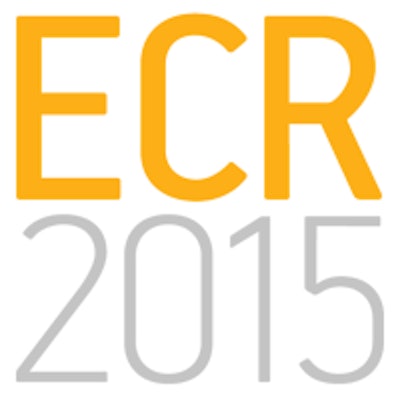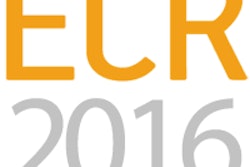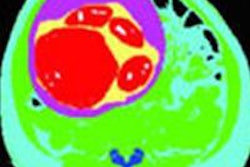
VIENNA - Dose tracking software can automatically monitor the radiation dose patients receive from their CT studies, yielding valuable data for quality assurance purposes and supporting the quest for dose optimization, according to a pair of presentations on Thursday at ECR 2015.
A team of researchers from Cork University Hospital in Ireland found that a Web-based software package could facilitate dose tracking and analysis of CT studies in adult patients. Meanwhile, a group from Heinrich-Heine-University Düsseldorf in Germany reported on the feasibility of cloud-based analysis of dose data contained in DICOM structured reports.
Radiation dose tracking software facilitates the assessment of dose associated with individual CT protocols, comparison with diagnostic reference levels (DRLs), and identification of those protocols that risk overexposure for patients, according to presenter Dr. Maria Twomey from Cork University Hospital.
The Irish researchers set out to evaluate the feasibility of using DoseWatch Web-based radiation dose tracking software (GE Healthcare) for assessing dose-length product (DLP) and size-specific dose estimates (SSDEs) on adult thoracic CT and abdominopelvic CT exams. They also wanted to compare these values with published DRLs and to identify dose outliers and causative factors, Twomey said. DoseWatch has been installed at Cork University Hospital since 2013.
In a retrospective study, the group used the software to review 576 randomly selected adult body thoracic CT and abdominopelvic CT routine and acute exams. The scans were performed over a five-month period on a LightSpeed VCT 64-slice or Discovery CT750 HD (both GE) scanner. The researchers also explored the effect of variables such as the level of radiographer experience and whether or not the scan was performed during normal working hours (9 a.m.-5 p.m.)
| DLP and SSDE for CT exams | ||
| Study | Mean DLP | Mean SSDE |
| Thoracic | 282 ± 151 mGy-cm (range: 5-1,753) | 9.22 ± 1.82 mGy (range: 5-16) |
| Abdominopelvic | 621 ± 231 mGy-cm (range: 244-1,582) | 13.7 mGy (range: 3-21) |
Both study categories had mean levels below the published diagnostic reference levels of 460 mGy-cm for thoracic and 640 mGy-cm for abdominopelvic CT studies, according to the researchers.
"Our mean thoracic CT dose levels were superior to published DRLs, and we need to do some work on our abdominopelvic dose levels," Twomey said.
Of the exams, 88% had a normal dose range and 12% had a dose considered to be high when compared with national diagnostic reference levels. The abdominopelvic CT studies had a higher percentage of dose outliers, she said.
In addition, higher doses were significantly associated with inexperienced technologists (p = 0.009), after-hours scanning (p = 0.04), and multiphase studies (p < 0.001). The researchers did not find a significant difference between inpatient and outpatient studies for either body part.
As might be expected, a moderate correlation was found between radiation dose and effective diameter (thoracic studies: Pearson r = 0.566, p < 0.001; abdominopelvic studies: Pearson r = 0.466, p < 0.001).
The software has drawn attention to the vast number (241) of protocols available to the radiographers, Twomey noted.
"We need to reduce the number and streamline the protocols to enable appropriate selection, but also it's really intrinsic to accurate data analysis," she said.
Automatic generation of individual SSDE offers a significant advantage for streamlining dose data analysis, according to Twomey.
"It's very useful for assessing and alleviating the causes of dose outliers because you can very quickly identify those," she said. "It's very time-efficient and useful for the development of both your local DRLs and for contributing data to Irish national and European DRLs."
Dose analysis in the cloud
In the second study, a German team found that dose data contained in DICOM structured reports can be used for large-scale, cloud-based analysis and monitoring the CT dose optimization process.
The study involved one institute and five CT scanners, and the researchers evaluated all CT exams between September 2011 and October 2014. DICOM structured reports were automatically generated, anonymized, and sent to a cloud server. Analysis was performed using DoseIntelligence software (PulmoKard) and Microsoft Excel.
Among the 33,035 CT exams, overall mean CT dose index volume (CTDIvol) was 45% of the national reference value, and overall mean DLP was 43% of the national reference value. Two percent of studies exceeded reference CTDIvol and 3% exceeded reference DLP values, according to presenter Dr. Johannes Boos of Heinrich-Heine-University Düsseldorf.
| CTDIvol and DLP for CT exams | ||
| Study | Mean CTDIvol | Mean DLP |
| Chest (n = 7,012) | 4.4 (44% of reference value) | 173.1 (47% of reference value) |
| Abdominal (n = 6,933) | 8.6 (43% of reference value) | 384 (43% of reference value) |
| Cranial (n = 8,863) | 41.4 (68% of reference value) | 642.8 (64% of reference value) |
| Overall | 30.9 (45% of reference value) | 441.7 (43% of reference value) |
"Cloud solutions enable multicenter dose monitoring, and that has great potential to further [dose optimization]," Boos said.



















